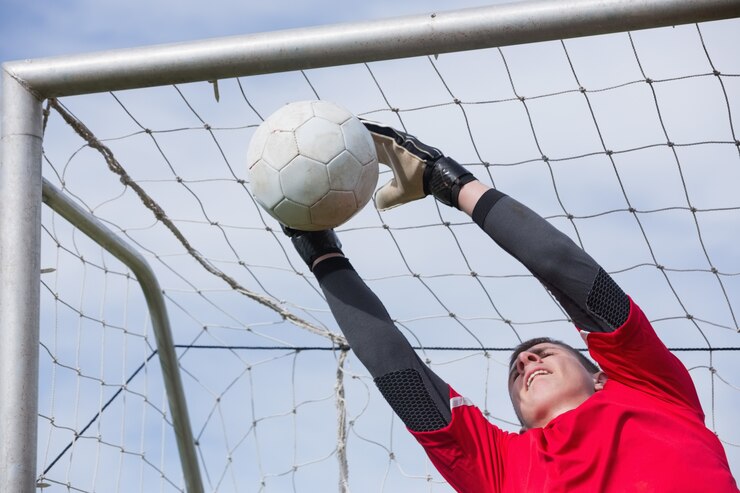The “Keeper Standard Test” is a critical assessment used to quantify the effectiveness, abilities, and unwavering quality of goalkeepers. Whether you’re getting ready for a proper test or essentially hoping to improve your insight, this guide will assist you with understanding what the test includes, the models utilized for assessment, and commonsense tips to expert it.
In this article, we’ll cover all that you want to be aware of the Keeper standard test, zeroing in on master experiences and commonsense counsel to assist you with breezing through with no problem at all.
1. What is the Keeper Standard Test?
The Keeper Standard Test is intended to survey the general presentation of goalkeepers, zeroing in on their capacity to hinder, plunge, and oversee high-pressure circumstances. It commonly incorporates drills, response tests, and reenactment of genuine match circumstances to assess a goalkeeper’s reflexes, situating, and critical thinking abilities.
2. Why Is the Keeper Standard Test Important?
The test is essential because it helps:
- Evaluate core skills: Ensures goalkeepers meet the required standards.
- Identify areas for improvement: Offers valuable feedback.
- Measure progress: Tracks development over time.
- Prepare for competition: Prepares goalkeepers for high-level matches.
3. Key Areas of Assessment in the Keeper Standard Test
The test focuses on several fundamental areas that assess both physical and mental agility. Key areas include:
| Assessment Area | Description |
| Shot-stopping | Ability to block shots from various distances and angles. |
| Diving technique | Proper form and speed when diving to make saves. |
| Ball distribution | Accuracy and efficiency in passing or throwing the ball. |
| Positioning | Correct body placement during free kicks, corners, and penalties. |
| Decision-making | Speed and accuracy of decisions under pressure. |
| Reflexes | Quick reaction to fast-moving shots. |
4. Preparation Tips for the Keeper Standard Test
Before taking the test, it’s crucial to focus on a balanced preparation plan. Here are some preparation tips:
- Practice daily: Build muscle memory by performing drills consistently.
- Analyze match videos: Study professional goalkeepers to understand positioning and technique.
- Simulate game scenarios: Recreate real-game situations to improve decision-making and reflexes.
- Work on fitness: Stamina and agility are vital for the test.
5. Top 7 Expert Tips to Excel in the Keeper Standard Test
- Master the Basics
Ensure your foundational skills, such as catching and positioning, are sharp. Consistent practice of basic drills is key. - Stay Calm Under Pressure
The test will likely include high-pressure situations. Learn to stay calm, as rushed decisions often lead to mistakes. - Improve Footwork
Goalkeeping isn’t just about your hands. Quick footwork helps with positioning and reaction times. - Focus on Distribution
In modern goalkeeping, distributing the ball efficiently is crucial. Work on both short and long passes. - Refine Diving Technique
Proper diving technique ensures not only better saves but also safety. Focus on landing smoothly and avoiding injury. - Work on Anticipation
Anticipating where the ball will go, rather than just reacting, will give you an edge in stopping shots. - Train Reflexes with Reaction Drills
Use tools like reaction balls or quick-moving drills to enhance your reflexes, helping you react faster to incoming shots.
6. Common Mistakes to Avoid During the Test
Avoid these pitfalls to improve your chances of passing:
- Overcommitting: Don’t rush out too quickly and leave the goal exposed.
- Poor communication: Always communicate clearly with your defenders.
- Misjudging angles: Ensure you’re positioned correctly based on the ball’s trajectory.
- Neglecting warm-up: A proper warm-up is essential for flexibility and readiness.
7. Mental Preparation: The Key to Success
A good portion of the keeper standard test evaluates your mental agility. Here are some mental prep tips:
- Visualize success: Picture yourself successfully completing each drill.
- Stay focused: Maintain concentration, even after making mistakes. One error shouldn’t derail your entire performance.
- Confidence is key: Approach every drill with confidence, as hesitation often leads to poor decisions.
8. Physical Fitness Requirements for the Keeper Standard Test
Goalkeepers need to be in top physical shape. Focus on:
- Stamina: High-intensity interval training (HIIT) is great for building endurance.
- Agility: Use ladder drills and cone exercises to boost your quickness.
- Strength: Core and upper body strength are essential for powerful dives and throws.
9. Resources to Help You Train for the Keeper Standard Test
Several resources can assist you in preparing for the test:
- Online training programs: Platforms like Keeperstop and The Modern Day GK offer comprehensive training guides.
- Apps: Apps like “Goalkeeper Training” provide drills and tutorials.
- YouTube channels: Channels dedicated to goalkeeping techniques, such as “Pro GK Academy,” provide helpful visual aids.
10. Final Thoughts: How to Approach the Keeper Standard Test
The keeper standard test is a thorough yet compensating evaluation of your abilities. By following the tips in this aide and zeroing in on both mental and actual readiness, you’ll be well headed to finishing the assessment with certainty. Keep in mind, consistency is vital — train brilliant, remain cool-headed, and put stock in your capacities.

